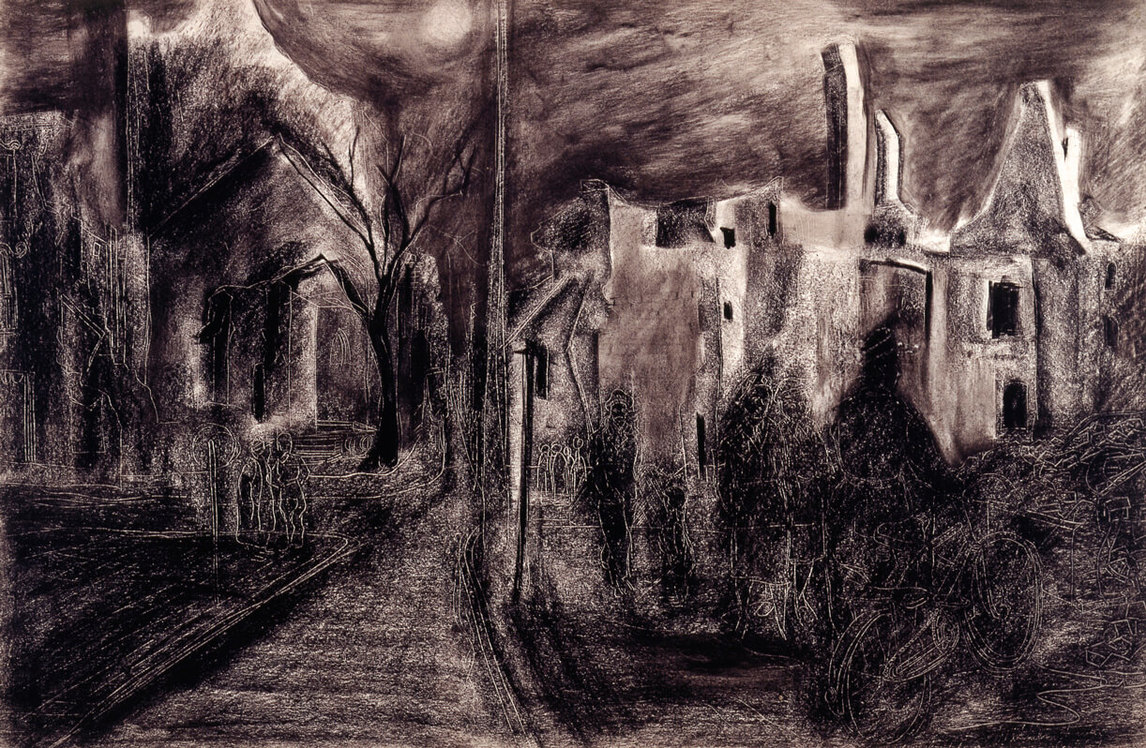Ruins of Emmerich, Germany 1945

Molly Lamb, Ruins of Emmerich, Germany, 1945
Watercolour, ink, and graphite on paper, 35.5 x 25.4 cm
Canadian War Museum, Ottawa
As an official war artist, Molly Lamb was given the opportunity to travel and document the European landscape immediately after the cessation of hostilities. In the summer of 1945, after three weeks working in a studio in London, she was sent to Europe with a car and driver for six weeks and given complete freedom to travel where she liked. “They were,” she said, “six of the richest and most exciting weeks of my life.”
For the most part, the subjects Lamb chose to depict differed little from those she had earlier portrayed in Canada—generally peaceful scenes on Canadian Women’s Army Corps bases in Holland and Belgium, for example. She did, however, document the devastating aftermath of the war in several sketches and watercolours of bombed-out cities and towns—as in the charred landscape in Ruins of Emmerich, Germany. Always, though, she maintained a psychological distance from her subjects. In this work, a lone woman is shown at the centre of the scene of a devastated churchyard. She is not rendered in any detail, so it is impossible to identify her. Is she a townswoman or a member of a relief organization? The graffiti scrawled on the wall refers to the 3rd Canadian Infantry Division, which was given the nickname “the Water Rats” by General Bernard Montgomery, and had fought at Emmerich. Her use of ink, graphite, and charcoal lends the scene a dark quality that suggests the violence of war and the terrible destruction in cities before they slowly began to rebuild.


Similarly, her watercolour Ruins, Holborn Street, London, 1945, depicts bombed-out homes in the British capital. The dark street scene is illuminated by a single gaslight as a small group of women gathers below to look at the remains of a brick wall. Lamb’s sketch Wilhelmshaven at Night and the painting German Children in Bremen, Germany, both 1945, attest to the human casualties of war. In the sketch, three army officers take stock of the ruined town. In the watercolour, a large group of children gather around an army officer. Have they been orphaned by war, or are they seeking food and shelter? Scenes of ruined towns depicted at nightfall are the only way Lamb portrayed violent subject matter.
Although she visited the Bergen-Belsen concentration camp and saw stacks of bones there, she felt she could not depict scenes of such personal horror—in contrast to her colleague Alex Colville (1920–2013) with his Bodies in a Grave, Belsen, 1946. A few other war artists, notably Bruno Bobak (1923–2012), whom she was soon to marry, reacted the same way Lamb did. Although she was moved by the unspeakable traumas and devastation resulting from the war, she refrained from rendering them in any graphic way.

 About the Author
About the Author
 More Online Art Books
More Online Art Books
 Acknowledgements
Acknowledgements